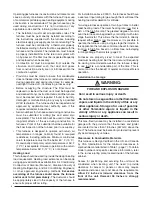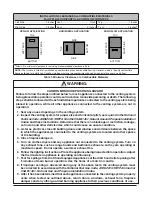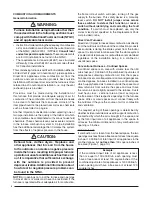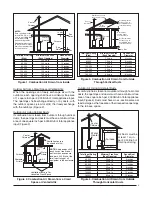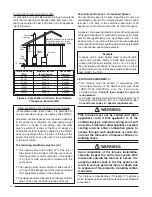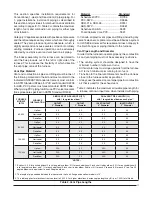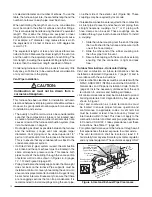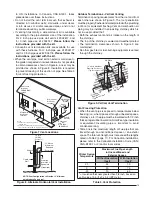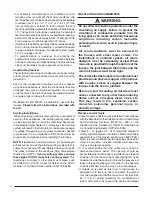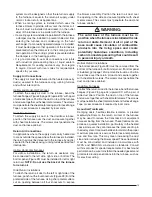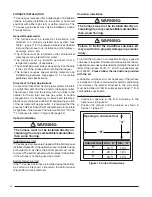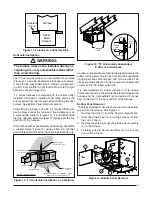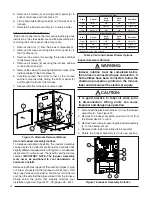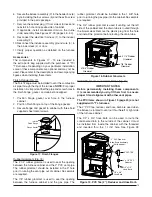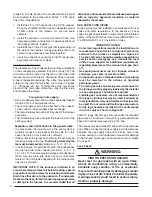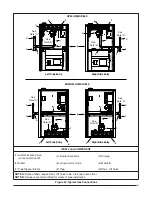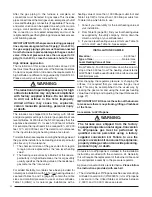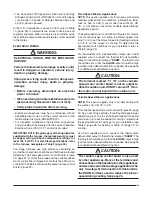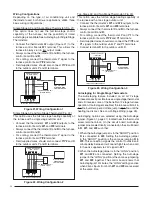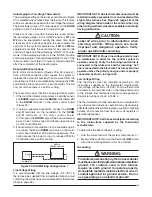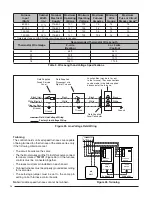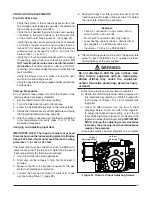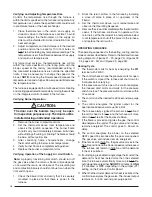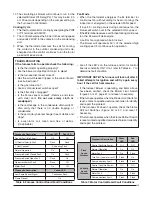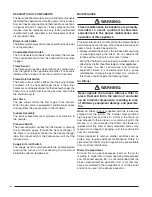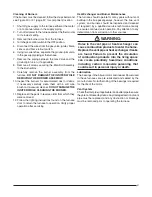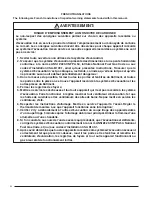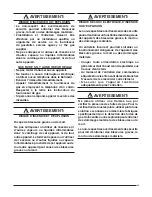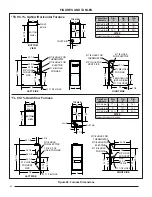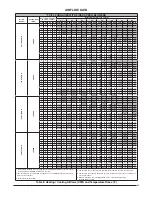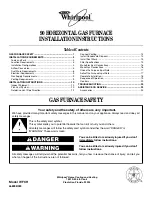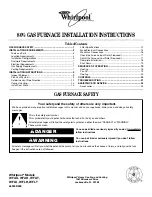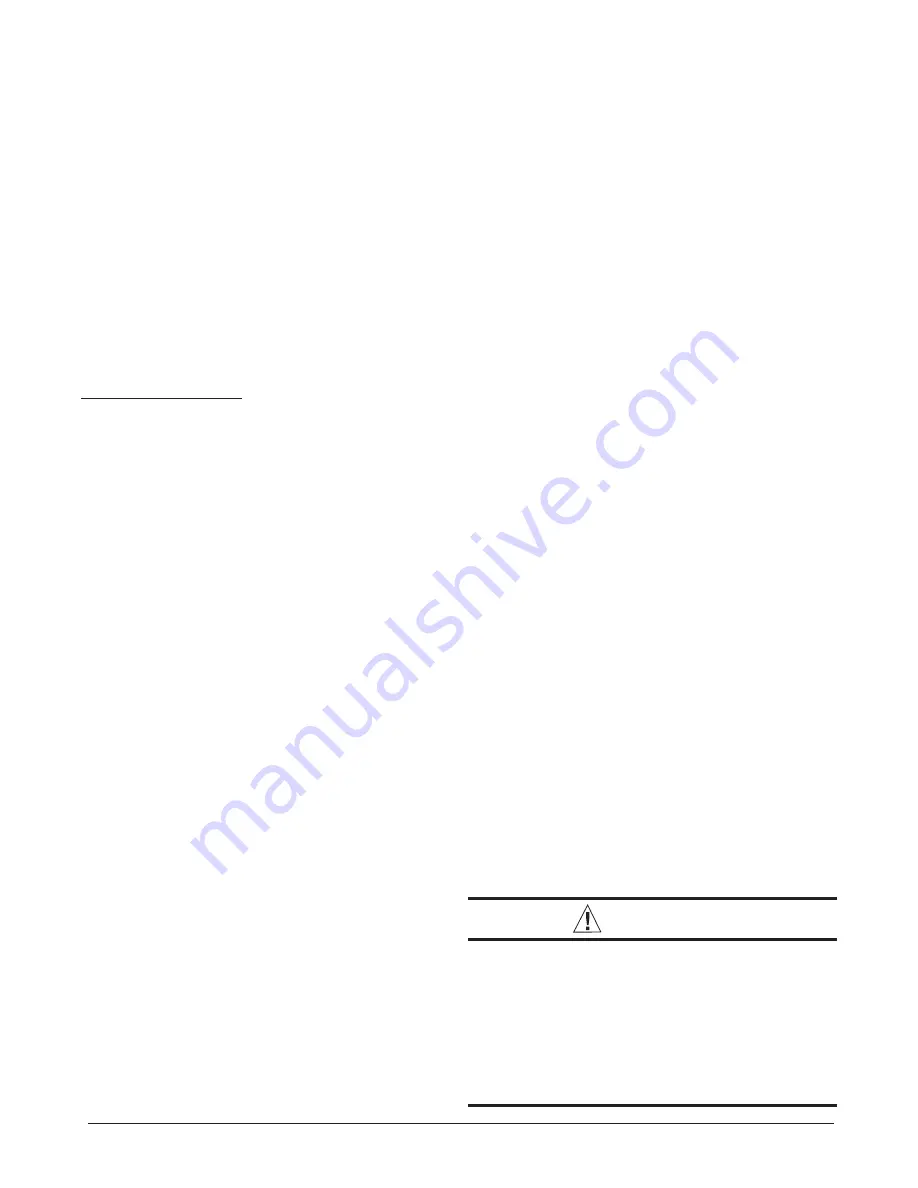
20
GAS SUPPLY AND PIPING
All gas piping must be installed in compliance with local
codes and utility regulations. In the absence of local
codes the gas line installation must comply with the latest
edition of the National Fuel Gas Code (ANSI Z223.1) or
(CAN/CGA B149.1 or .2) Installation Codes.
IMPORTANT NOTES:
• Some local regulations require the installation of a
manual main shut-off valve and ground joint union
external to the furnace as depicted in Figure 20.
The shut-off valve should be readily accessible for
service and/or emergency use. Consult the local
utility or gas supplier for additional requirements
regarding placement of the manual main gas shut-
off.
• Gas piping must never run in or through air ducts,
chimneys, gas vents, or elevator shafts.
• Compounds used on threaded joints of gas piping
must be resistant to the actions of liquefied
petroleum gases.
• The main gas valve and main power disconnect to
the furnace must be properly labeled by the installer
in case emergency shutdown is required.
• Flexible gas connectors are not recommended for
this type of furnace but may be used if allowed by
local jurisdiction. Only new fl exible connectors may
be used. Do not reuse old fl exible gas connectors.
• A drip leg should be installed in the vertical pipe
run to the unit as shown in Figure 20.
Table 12 (page 38) lists gas fl ow capacities for standard
pipe sizes as a function of length in typical applications
based on nominal pressure drop in the line.
The furnace may be installed for either left or right side gas
entry. When connecting the gas supply, provide clearance
between the gas supply line and the entry hole in the
furnace casing to avoid unwanted noise and/or damage
to the furnace. Typical gas hookups are shown in Figure
20 (page 21).
Leak Check
WARNING:
FIRE OR EXPLOSION HAZARD
Never test for gas leaks with an open fl ame.
Check all connections using a commercially
available soap solution. A fi re or explosion
may result causing property damage, personal
injury or loss of life. Failure to follow the safety
warnings exactly could result in serious injury,
death or property damage.
Condensate Drain Lines
The placement of the condensate drain lines will depend
on the confi guration selected in Table 4 (page 18). The
drain lines can be routed out the left or right side of the
furnace, but must maintain a downward slope to ensure
proper condensate drainage. The J-trap may need to be
rotated to the side that matches your setup in Figures
37 - 39 (pages 48 - 50). To rotate the J-trap, loosen the
clamp on the drain tube, rotate the J-trap to either side,
and retighten the clamp.
Four general rules apply:
• Each condensate drain line must be separately trapped
using a J-Trap or fi eld supplied loop.
• There must always be a drain attached to the collector
at the outlet of the secondary heat exchanger.
• There must always be a drain at the outlet of the inducer
assembly.
• There must always be a drain at the lowest point of the
venting system.
Exceptions and clarifi cations to the general rules:
• In some cases, the lowest point in the vent system is
where it connects to the inducer (Options 6 & 8). In this
case one drain at this location is suffi cient.
• If the vent exits the furnace horizontally, the vent may be
turned vertically with a tee.
The drip leg formed by the
tee must include a drain
(Options 1-4, 9, 11, 12, 14).
• In certain cases, it is permitted to drain the inducer back
into the top drain of the collector (Options 1, 3, 5, 7, 9,
10, 12, & 13). To ensure proper drainage of condensate,
make sure the drain line does not sag or becomes
twisted. The drain tube supplied with the furnace may
need to be trimmed.
IMPORTANT NOTE: If the furnace is installed in an
area where temperatures fall below freezing, special
precautions must be made for insulating condensate
drain lines that drain to the outdoors.
If condensate
freezes in the lines, this will cause improper operation
or damage to the furnace. It is recommended that all
(page 34) for hole location The condensate drain should
be connected to the barbed end. Attach 1” PVC drain
line to the threaded end.
1. Install the 1/2” x 1/2” hose barb on the 2” PVC reducer.
Do not over tighten! NOTE: Use an adequate amount
of Tefl on tape on the threads. Do not use liquid
sealants.
2. Install the reducer on one end of the PVC tee. Use
appropriate primer and cement to permanently bond
the reducer and tee together.
3. Install the tee on the 2” vent pipe that is extending out
the side of the cabinet. Use appropriate primer and
cement to permanently bond them together.
4. Verify all connections and joints for tight fi t and proper
alignment with other vent pipes.
drain lines on the outside of the residence be wrapped
with an industry approved insulation or material
allowed by local code.

